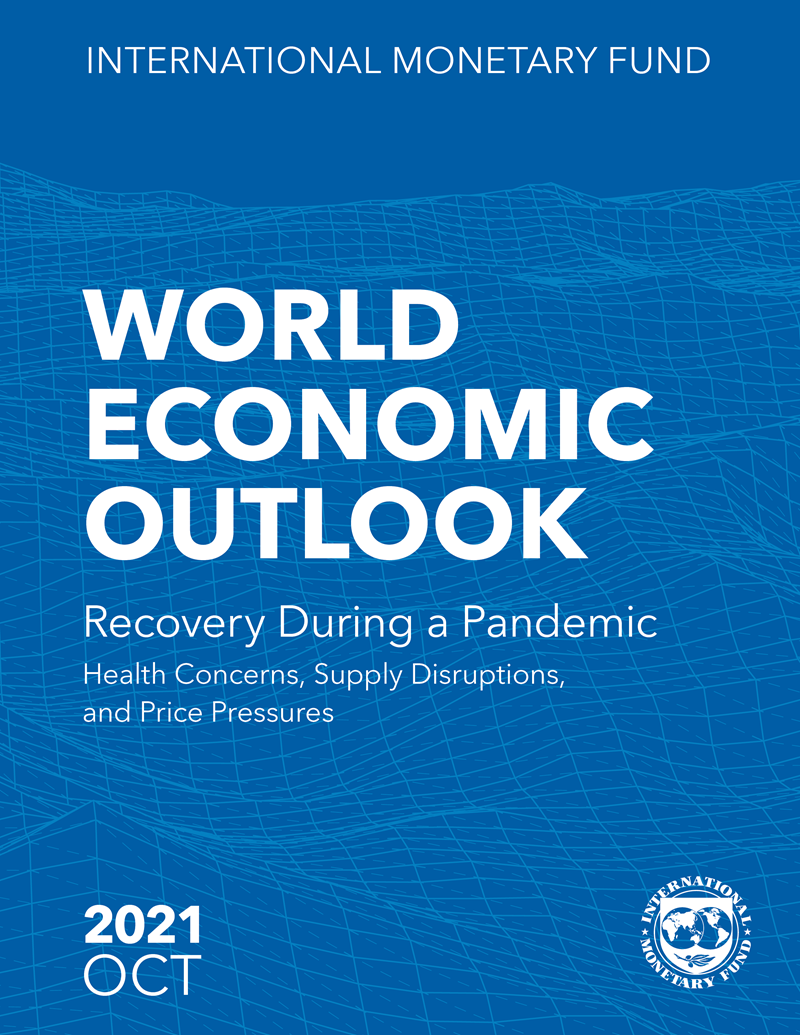Navigating Global Business Challenges Amid Pandemic

Navigating Global Business Challenges Amid Pandemic
The global business landscape has undergone unprecedented transformations in the wake of the pandemic. This article explores the multifaceted challenges faced by businesses globally and strategies for navigating this complex environment.
Disruptions in Supply Chains and Logistics
The pandemic triggered disruptions in supply chains and logistics, impacting businesses reliant on global networks. Lockdowns, travel restrictions, and fluctuating demand created challenges in procuring raw materials and delivering finished products. Strategies for resilience include diversifying supply sources and adopting agile logistics solutions.
Adapting to Remote Work and Digital Transformation
The sudden shift to remote work became a necessity for many businesses. Embracing digital transformation became imperative to ensure operational continuity. Companies had to invest in technology infrastructure, cybersecurity, and collaborative tools to support remote workforces, highlighting the importance of agility in adapting to new work paradigms.
Market Uncertainties and Fluctuating Consumer Behavior
Market uncertainties and fluctuating consumer behavior posed challenges for businesses across industries. Shifts in consumer priorities, reduced spending, and changing preferences required agile market strategies. Businesses had to analyze data in real-time, monitor trends, and swiftly adapt marketing and product strategies to meet evolving consumer demands.
Financial Strains and Cost Management
Financial strains became a pressing issue as revenues fluctuated and economic uncertainties prevailed. Businesses faced the challenge of cost management while maintaining essential operations. Strategic financial planning, evaluating cost structures, and seeking financial assistance became crucial components in sustaining business viability.
Global Talent Management and Remote Team Collaboration
Managing a global workforce became intricate as travel restrictions and remote work became widespread. Businesses needed effective talent management strategies to navigate cultural differences, time zone challenges, and foster remote team collaboration. Leveraging technology for virtual team-building and maintaining clear communication channels became integral.
Navigating Regulatory Changes and Compliance
The pandemic prompted regulatory changes and compliance challenges, requiring businesses to stay abreast of evolving laws and guidelines. Industries such as healthcare, finance, and travel faced unique compliance demands. Establishing a robust regulatory monitoring system and investing in compliance technology became essential for global business operations.
Crisis Communication and Reputation Management
Crisis communication became paramount for businesses in the face of uncertainties. Maintaining transparent communication with stakeholders, customers, and employees was crucial. Effective crisis communication strategies and reputation management helped businesses build trust and resilience in the midst of challenges.
E-commerce Opportunities and Digital Marketing Strategies
While traditional business models faced disruptions, e-commerce opportunities surged. Businesses had to pivot to digital marketing strategies, enhance online presence, and optimize e-commerce platforms. Adopting innovative digital marketing techniques and creating seamless online experiences became pivotal for success.
Sustainable Business Practices and Corporate Social Responsibility
The pandemic highlighted the importance of sustainable business practices and corporate social responsibility (CSR). Businesses that aligned with social and environmental values gained consumer trust. Integrating CSR initiatives, adopting sustainable practices, and contributing to community welfare became integral aspects of global business strategies.
Strategic Partnerships and Collaborations
Amid challenges, strategic partnerships and collaborations emerged as a resilient approach. Businesses sought alliances to share resources, mitigate risks, and explore new market opportunities. Collaborative ventures, joint ventures, and industry partnerships became instrumental in navigating uncertainties and fostering innovation.
Visit The Healthy Consumer for comprehensive resources and support in navigating the challenges of global business during the pandemic. Together, let’s build resilience and chart a path towards sustainable success in a dynamic world.
Rebuilding Economies: Global Pandemic Recovery Strategies

Charting the Path Forward: Strategies for Global Pandemic Economic Recovery
The aftermath of a global pandemic demands strategic and concerted efforts to recover and rebuild economies worldwide. As nations grapple with the economic fallout, devising comprehensive recovery strategies becomes paramount for fostering stability, growth, and resilience.
Assessing the Economic Impact
To develop effective recovery strategies, a thorough assessment of the economic impact of the global pandemic is essential. Understanding the sectors most affected, the extent of job losses, and the overall economic contraction provides a foundational understanding of the challenges that must be addressed in the recovery process.
Fiscal Stimulus and Monetary Policies
Governments play a central role in economic recovery, and fiscal stimulus measures are key components of their arsenal. Injecting funds into critical sectors, providing financial aid to affected businesses, and implementing monetary policies that support liquidity are strategies aimed at jumpstarting economic activity and restoring confidence.
Supporting Small and Medium Enterprises (SMEs)
Small and Medium Enterprises (SMEs) often bear the brunt of economic downturns. Crafting targeted support measures for SMEs, including access to credit, grants, and business advisory services, is crucial. Empowering these businesses not only aids in their recovery but also stimulates broader economic activity.
Investing in Infrastructure Projects
Strategic investments in infrastructure projects can serve as catalysts for economic recovery. These projects create jobs, stimulate demand for goods and services, and contribute to long-term economic growth. Governments can leverage infrastructure spending to revitalize economies and lay the groundwork for future prosperity.
Reskilling and Workforce Development
As the economic landscape evolves, reskilling and workforce development become integral components of recovery strategies. Investing in programs that facilitate the acquisition of new skills and aligning workforce capabilities with emerging industries can enhance employment prospects and bolster the resilience of the labor market.
Digital Transformation and Innovation
The global pandemic has accelerated the need for digital transformation across industries. Integrating technology and fostering innovation become essential for economic recovery. Governments and businesses that prioritize digital strategies can enhance efficiency, competitiveness, and adaptability in the post-pandemic economic landscape.
Trade and International Cooperation
In an interconnected world, trade and international cooperation play vital roles in economic recovery. Facilitating trade agreements, removing barriers to international commerce, and fostering diplomatic ties contribute to a global economic resurgence. Collaborative efforts strengthen economies and open avenues for shared prosperity.
Sustainable and Inclusive Recovery
A truly resilient economic recovery is one that is sustainable and inclusive. Prioritizing environmental sustainability, promoting green technologies, and ensuring that recovery measures address social inequalities contribute to a more robust and equitable economic landscape.
Building Financial Resilience
Individuals and businesses alike must focus on building financial resilience. Sound financial planning, diversification of income sources, and risk management strategies are essential. Empowering individuals to navigate economic uncertainties enhances overall societal resilience.
Monitoring and Adaptation
The recovery process is dynamic and requires continuous monitoring and adaptation. Governments and businesses must remain agile, adjusting strategies based on evolving economic conditions, emerging opportunities, and challenges. Flexibility and a willingness to iterate are key to sustained recovery.
To explore in-depth insights into global pandemic economic recovery, visit Global Pandemic Economic Recovery. As the world collectively strives to recover from the economic repercussions of the pandemic, a holistic and collaborative approach is paramount. By implementing strategic recovery measures, fostering innovation, and prioritizing sustainability, nations can lay the groundwork for a resilient and prosperous post-pandemic future.
Ensuring Business Continuity Amidst the Pandemic Challenges

Navigating Business Continuity Amidst the Pandemic Challenges
The COVID-19 pandemic has brought unprecedented challenges to businesses worldwide. Ensuring business continuity in the face of such uncertainties has become a top priority. Organizations are adopting strategic measures to adapt, survive, and thrive in this dynamically changing landscape.
Resilience through Remote Work Adoption:
One of the key strategies for business continuity during the pandemic has been the widespread adoption of remote work. Companies quickly transitioned to remote work models, leveraging technology to maintain operations. This shift not only ensured employee safety but also showcased the adaptability of businesses in the face of adversity.
Digital Transformation as a Pillar of Continuity:
Embracing digital transformation has proven to be a critical pillar for business continuity. Companies that invested in technology found themselves better equipped to navigate disruptions. Cloud computing, digital collaboration tools, and e-commerce platforms have played pivotal roles in enabling seamless operations and customer engagement, even in the most challenging times.
Supply Chain Resilience and Diversification:
The pandemic exposed vulnerabilities in global supply chains, prompting businesses to reassess and enhance their supply chain strategies. Building resilience through diversification, local sourcing, and strategic partnerships became essential. This shift aimed to mitigate the impact of disruptions and ensure a steady flow of goods and services.
Financial Planning and Adaptive Budgeting:
Financial stability is fundamental to business continuity. Companies focused on adaptive budgeting, revisiting financial plans, and exploring cost-saving measures. Financial agility allowed businesses to weather the storm, ensuring the availability of resources for essential operations and strategic initiatives.
Crisis Communication and Stakeholder Management:
Effective communication during a crisis is paramount. Businesses prioritized transparent and timely communication with employees, customers, and stakeholders. Managing expectations and demonstrating a commitment to transparency fostered trust and goodwill, essential elements for maintaining business continuity in times of uncertainty.
Business Continuity Pandemic: A Holistic Approach
In the pursuit of business continuity during the pandemic, adopting a holistic approach is imperative. Combining remote work strategies, digital transformation initiatives, supply chain resilience, financial planning, and effective communication creates a comprehensive framework to navigate the challenges posed by the ongoing global crisis.
To explore more insights on Business Continuity during the Pandemic, visit Business Continuity Pandemic for valuable resources and guidance.
Innovation as a Driver of Continuity:
Innovation emerged as a driving force behind business continuity. Companies that embraced innovation found new ways to deliver products and services, often discovering untapped opportunities. Adapting to market shifts and consumer behavior changes became integral to sustaining operations and maintaining relevance.
Employee Well-being and Organizational Culture:
Prioritizing employee well-being and nurturing a resilient organizational culture contributed significantly to business continuity. Companies that invested in supporting their employees’ mental health, providing flexibility, and fostering a sense of belonging witnessed increased productivity and loyalty, further ensuring continuity during challenging times.
Preparing for Future Uncertainties:
As businesses navigate the current challenges, preparing for future uncertainties remains a constant consideration. Scenario planning, risk assessments, and continuous improvement strategies are essential components of building resilience. Proactively addressing potential disruptions positions businesses to respond effectively and ensure continuity in the face of unforeseen challenges.
Conclusion:
Ensuring business continuity during the pandemic requires a multifaceted approach that encompasses remote work, digital transformation, supply chain resilience, financial planning, crisis communication, innovation, employee well-being, and proactive preparation for future uncertainties. By embracing these strategies, businesses can not only survive the current challenges but also thrive in a rapidly changing global landscape.
Remote Evolution: Adapting Work in the Pandemic

The Swift Transition: Remote Work in the Pandemic Era
The onset of the global pandemic necessitated a rapid shift in work dynamics, leading to the widespread adoption of remote work. This abrupt transition prompted organizations worldwide to rethink and adapt their strategies to accommodate a remote workforce. The agility with which businesses adapted to this new normal became a testament to resilience in the face of unprecedented challenges.
Technological Overhaul: Enabling Seamless Connectivity
Central to the success of remote work adaptations was a technological overhaul. Organizations invested in robust digital infrastructure, collaboration tools, and secure communication platforms. This technological leap was essential for creating an environment where employees could seamlessly connect, collaborate, and maintain productivity, regardless of physical locations.
Flexibility Redefined: Embracing Remote Work Structures
Adapting to remote work required a redefinition of traditional notions of flexibility. Remote work adaptations went beyond merely allowing employees to work from home; they involved a shift in mindset and the establishment of flexible work structures. Organizations embraced results-driven approaches, focusing on outcomes rather than rigid working hours, fostering a culture of trust and autonomy.
Employee Well-Being: Prioritizing Mental Health and Work-Life Balance
As the remote work landscape evolved, organizations recognized the importance of prioritizing employee well-being. Remote work adaptations extended beyond professional aspects to consider the mental health and work-life balance of employees. Initiatives such as virtual wellness programs, flexible schedules, and clear communication channels aimed to support employees in maintaining a healthy work-life integration.
Collaborative Culture: Nurturing Connection in a Virtual World
Maintaining a sense of connection and collaboration became pivotal in remote work adaptations. Organizations actively fostered a collaborative culture through virtual team-building activities, regular video meetings, and digital collaboration platforms. These initiatives aimed to recreate the camaraderie of an in-person workplace and mitigate the potential feelings of isolation among remote team members.
Security Imperative: Safeguarding Digital Workspaces
With the shift to remote work, ensuring the security of digital workspaces became a paramount concern. Organizations implemented robust cybersecurity measures to safeguard sensitive data and protect against potential cyber threats. This adaptation involved not only technological solutions but also comprehensive training programs to educate employees on best practices for maintaining a secure remote work environment.
Adaptive Leadership: Guiding Teams through Uncertainty
Adapting to remote work required adaptive leadership that could guide teams through the uncertainty of the pandemic. Leaders embraced a more empathetic and communicative approach, recognizing the unique challenges faced by remote team members. Transparent communication, regular check-ins, and responsive leadership became essential components of remote work adaptations.
Continuous Learning: Upskilling for a Digital Future
Recognizing the digital shift as a long-term transformation, organizations prioritized continuous learning and upskilling initiatives. Remote work adaptations meant equipping employees with the necessary digital skills to thrive in a virtual environment. Online training programs, virtual workshops, and mentorship opportunities became integral to building a workforce prepared for the challenges of a digital future.
Agile Policies: Embracing Change for Ongoing Success
Successful remote work adaptations were characterized by organizations embracing agile policies that could evolve with changing circumstances. The ability to adapt policies and practices in response to feedback, technological advancements, and emerging trends ensured ongoing success in the remote work landscape. Flexibility in policies became a cornerstone for sustaining productivity and employee satisfaction.
Future of Work: Shaping a Hybrid Landscape
As organizations navigated the challenges of remote work adaptations, they began envisioning a future of work that embraced a hybrid model. The experiences gained during the pandemic informed strategies for creating a flexible work environment that combines the benefits of remote work with in-person collaboration. This hybrid landscape aims to provide employees with choices that suit their individual preferences and the needs of the organization.
To explore more about remote work adaptations, visit Remote Work Pandemic Adaptations. The journey of adapting to remote work during the pandemic has been transformative, pushing organizations to reconsider their structures and strategies. The lessons learned from these adaptations will likely shape the future of work, creating a more flexible, technology-enabled, and people-centric work environment.
Revitalizing Economies: Strategies for Post-Pandemic Recovery

Revitalizing Economies: Strategies for Post-Pandemic Recovery
The global pandemic has significantly impacted economies worldwide, necessitating strategic approaches for recovery. In this article, we delve into key strategies to revitalize economies in the post-pandemic era, fostering resilience and sustainable growth.
Understanding the Economic Fallout: Challenges and Opportunities
The first step in economic recovery is understanding the challenges and opportunities presented by the pandemic. From disrupted supply chains to shifts in consumer behavior, a comprehensive understanding of the economic fallout enables policymakers and businesses to formulate targeted recovery strategies.
Fiscal Stimulus and Monetary Policies: Injecting Vital Support
Governments play a crucial role in economic recovery through fiscal stimulus and monetary policies. Injecting financial support into the economy through stimulus packages and implementing accommodative monetary policies helps alleviate economic stress. These measures aim to boost spending, support businesses, and restore consumer confidence.
Sector-Specific Support: Tailoring Assistance for Resilience
Different sectors have experienced varying degrees of impact during the pandemic. Tailoring support measures for specific industries ensures a more targeted and effective recovery. Whether it’s tourism, hospitality, or manufacturing, providing sector-specific assistance contributes to the overall resilience of the economy.
Digital Transformation: Accelerating Technological Adoption
Digital transformation has emerged as a catalyst for economic recovery. Accelerating technological adoption enhances productivity, improves efficiency, and opens new avenues for growth. Investing in digital infrastructure, promoting e-commerce, and fostering innovation contribute to a more resilient and adaptable economy.
Sustainable Development: Balancing Growth and Environmental Responsibility
Post-pandemic recovery offers an opportunity to prioritize sustainable development. Balancing economic growth with environmental responsibility ensures long-term resilience. Investing in green technologies, promoting renewable energy, and incorporating sustainable practices into business models contribute to a more environmentally conscious recovery.
Workforce Reskilling and Upskilling: Navigating the Changing Job Landscape
The pandemic has reshaped the job landscape, necessitating a focus on workforce reskilling and upskilling. Investing in education and training programs equips the workforce with the skills needed for emerging industries. This proactive approach not only reduces unemployment but also fosters economic adaptability.
Global Collaboration: Strengthening International Partnerships
International collaboration is integral to economic recovery. Strengthening global partnerships facilitates trade, technology transfer, and knowledge sharing. By fostering cooperation on a global scale, economies can tap into diverse resources and create a more interconnected and resilient economic ecosystem.
Infrastructure Investment: Building for the Future
Strategic infrastructure investment plays a vital role in economic revitalization. Developing and upgrading infrastructure, including transportation, communication, and energy systems, stimulates economic activity, creates jobs, and sets the foundation for sustained growth in the post-pandemic era.
Diversification and Innovation: Redefining Economic Models
Economic recovery requires redefining economic models through diversification and innovation. Encouraging entrepreneurship, supporting startups, and fostering a culture of innovation contribute to economic dynamism. Diversifying revenue streams reduces vulnerability and enhances the adaptability of economies.
Accessing Economic Recovery Pandemic: A Comprehensive Resource
For additional insights and resources on strategies for economic recovery in the post-pandemic era, consider exploring Economic Recovery Pandemic. This centralized hub provides valuable information, practical tips, and support for policymakers, businesses, and individuals navigating the complexities of economic recovery in the wake of the global pandemic.
Revitalizing Tomorrow: Strategic Pandemic Recovery Plans

Charting a Course Forward: Strategic Pandemic Recovery Plans
The aftermath of the global pandemic calls for strategic recovery plans to rebuild, revitalize, and create a resilient future. In this exploration, we delve into the essential components and considerations in crafting effective pandemic recovery plans.
Assessing the Economic Landscape
Before formulating recovery plans, a thorough assessment of the economic landscape is essential. Understanding the specific challenges faced by industries, businesses, and communities provides a foundation for targeted recovery strategies. This initial step sets the stage for informed decision-making.
Government Initiatives for Stimulating Recovery
Governments play a pivotal role in jumpstarting economic recovery. Stimulus packages, financial aid, and policy adjustments are crucial tools. These initiatives aim to bolster businesses, support employment, and inject liquidity into the economy, creating a conducive environment for recovery.
Investing in Infrastructure and Innovation
Strategic recovery plans prioritize investments in infrastructure and innovation. Modernizing critical infrastructure not only stimulates economic activity but also enhances long-term resilience. Investing in innovation fosters a competitive edge, driving growth and adaptation to the evolving global landscape.
Supporting Small Businesses: The Backbone of Recovery
Small businesses are often disproportionately affected during crises. Recovery plans must include targeted support for these enterprises. Financial assistance, mentorship programs, and access to resources empower small businesses to recover and contribute to the overall economic revival.
Building a Resilient Workforce
The recovery journey includes a focus on building a resilient and adaptable workforce. Training programs, upskilling initiatives, and support for displaced workers are integral components. Investing in human capital ensures that individuals are equipped for the evolving job market.
Green Initiatives for Sustainable Recovery
Pandemic recovery plans offer an opportunity to prioritize sustainable and eco-friendly initiatives. Green investments, renewable energy projects, and environmentally conscious policies contribute not only to economic recovery but also to a more sustainable and resilient future.
Digital Transformation for Economic Agility
Accelerating digital transformation is a key aspect of pandemic recovery plans. Embracing technology enhances economic agility, streamlines processes, and ensures business continuity. The digital landscape becomes a cornerstone for innovation, efficiency, and competitiveness.
Ensuring Inclusive Recovery Strategies
In crafting recovery plans, a commitment to inclusivity is paramount. Strategies should address disparities in access to resources and opportunities. Inclusive recovery fosters social cohesion and ensures that the benefits of recovery are distributed equitably across diverse communities.
Global Collaboration for Comprehensive Recovery
The interconnected nature of the global economy emphasizes the need for collaborative recovery efforts. International cooperation, knowledge sharing, and coordinated strategies contribute to a more comprehensive and effective recovery. Together, nations can navigate the challenges and seize opportunities for growth.
Public Health Investments and Preparedness
Beyond economic considerations, pandemic recovery plans underscore the importance of public health investments. Strengthening healthcare systems, ensuring access to essential services, and enhancing pandemic preparedness contribute to a resilient foundation for the future.
Pandemic Recovery Plans: A Call to Action
As we embark on the journey of recovery, staying informed about pandemic recovery plans is crucial. Explore insights and strategies for revitalizing tomorrow at Pandemic Recovery Plans. Together, let us chart a course toward a resilient, inclusive, and sustainable future.
Adapting Success: Business Strategies Amid the Pandemic

Adapting Success: Business Strategies Amid the Pandemic
The COVID-19 pandemic has forced businesses to reevaluate and adapt their strategies to navigate through unprecedented challenges. This article explores various business strategies implemented by organizations to thrive and succeed in the midst of the pandemic.
Business Strategies Pandemic: A Comprehensive Guide
For a comprehensive guide on business strategies during the pandemic, visit Business Strategies Pandemic for valuable insights and resources.
Digital Transformation and E-Commerce Expansion:
The pandemic accelerated the need for businesses to embrace digital transformation. This paragraph delves into how companies swiftly adopted e-commerce solutions, online platforms, and digital tools to maintain operations, reach customers, and adapt to the changing landscape of consumer behavior.
Agile and Flexible Business Models:
Adaptability became a key factor in business survival. This section explores how businesses adopted agile and flexible business models, allowing them to quickly respond to changing market conditions, supply chain disruptions, and evolving customer demands.
Remote Work and Virtual Collaboration:
The widespread shift to remote work transformed the traditional workplace. This paragraph discusses how businesses implemented remote work strategies and leveraged virtual collaboration tools to ensure continuity, employee safety, and productivity in the face of lockdowns and social distancing measures.
Customer-Centric Approaches and Personalization:
Understanding the shifting priorities and needs of customers became paramount. This section explores how businesses adopted customer-centric approaches, personalized services, and enhanced communication to strengthen customer relationships and loyalty during uncertain times.
Supply Chain Diversification and Resilience:
Global supply chain disruptions highlighted the importance of resilience. This paragraph examines how businesses diversified their supply chains, embraced local sourcing, and implemented measures to enhance resilience against external shocks, ensuring a more robust and adaptable supply network.
Cost-Cutting and Operational Efficiency:
Facing economic uncertainties, businesses focused on cost-cutting and operational efficiency. This section explores strategies such as streamlining processes, renegotiating contracts, and optimizing resource utilization to ensure financial stability and weather the financial challenges of the pandemic.
Innovation and Product Development:
Innovation emerged as a driving force for businesses seeking growth. This paragraph discusses how companies invested in research and development, introduced new products or services, and adapted existing offerings to meet the changing needs of the market and consumers.
Community Engagement and Corporate Social Responsibility:
Maintaining a strong connection with the community became a priority. This section explores how businesses engaged in corporate social responsibility initiatives, supported local communities, and demonstrated a commitment to social causes, enhancing their brand reputation and fostering a positive public image.
Strategic Partnerships and Collaborations:
Amid uncertainty, strategic partnerships and collaborations became a strategy for mutual benefit. This paragraph examines how businesses formed alliances, entered into collaborations, and leveraged shared resources to navigate challenges collectively, enhancing their capabilities and market presence.
Financial Planning and Risk Management:
Sound financial planning and risk management became critical for business survival. This section explores how businesses reassessed their financial strategies, built contingency plans, and managed risks effectively to withstand economic uncertainties and unforeseen disruptions.
Conclusion:
Adapting success in the midst of a pandemic requires businesses to be agile, innovative, and customer-centric. Whether through digital transformation, flexible business models, remote work strategies, or community engagement, organizations have demonstrated resilience and creativity in navigating challenges. As the business landscape continues to evolve, the lessons learned from the pandemic will shape the strategies and approaches that businesses adopt in the post-pandemic era.
Navigating Economic Fallout: Strategies Amidst Pandemic Challenges
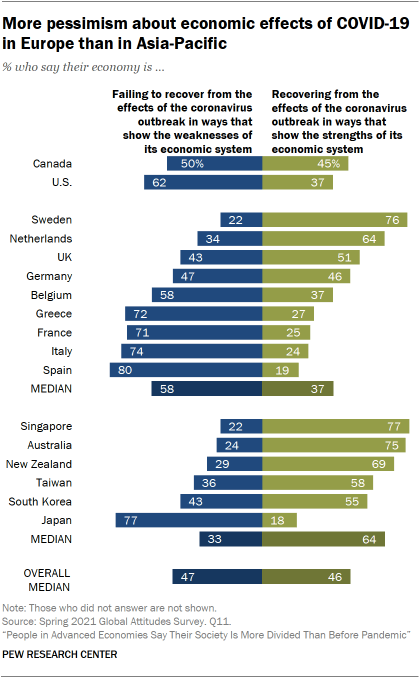
Assessing the Economic Fallout: Understanding the Pandemic’s Impact
The global pandemic has left an indelible mark on economies worldwide, triggering unprecedented challenges. In this exploration, we delve into the multifaceted impact on economies and the strategies employed to navigate the economic fallout.
Unprecedented Disruptions Across Industries
The economic pandemic impact has not been uniform; various industries have experienced disruptions of varying magnitudes. From travel and tourism to retail and manufacturing, the shockwaves have reverberated through supply chains, leading to widespread economic uncertainty.
Rising Unemployment and Labor Market Strain
One of the immediate consequences has been a surge in unemployment rates and labor market strain. Businesses, grappling with closures and reduced operations, have been forced to lay off workers. This has created a domino effect, impacting consumer spending and further intensifying the economic challenges.
Government Stimulus Packages: Balancing Act for Stability
Governments worldwide have responded to the economic fallout with stimulus packages aimed at stabilizing their economies. Balancing the need for financial support with long-term fiscal responsibility is a delicate task. These measures include direct payments, small business support, and investment in critical sectors to spur economic recovery.
Digital Transformation as a Resilience Strategy
Amidst economic challenges, businesses have accelerated their digital transformation efforts. Embracing technology has allowed some industries to adapt and even thrive during the pandemic. From remote work solutions to digital platforms, technology has become a cornerstone of resilience in the face of economic adversity.
Supply Chain Resilience: Lessons Learned
The pandemic highlighted vulnerabilities in global supply chains, leading to disruptions in the production and distribution of goods. As a response, businesses are reevaluating and restructuring their supply chains to enhance resilience, minimize risks, and ensure more robust operations in the face of future uncertainties.
Small Businesses: Navigating the Storm
Small businesses have borne a significant brunt of the economic impact. Many faced closures, financial hardships, and uncertainty about their future. Innovative solutions, community support, and government assistance have been crucial in helping these enterprises weather the storm and contribute to economic recovery.
Shifting Consumer Behavior: A New Economic Landscape
Consumer behavior underwent a seismic shift during the pandemic. E-commerce, remote services, and contactless transactions became more prevalent. Businesses adapting to these changes are better positioned to thrive in the evolving economic landscape, emphasizing the importance of agility in response to shifting consumer preferences.
Global Cooperation for Economic Recovery
Addressing the economic fallout requires global cooperation. Collaborative efforts between nations, international organizations, and businesses are crucial for fostering economic recovery. Shared knowledge, resources, and strategies contribute to a more resilient and interconnected global economy.
Investing in Sustainable and Inclusive Growth
As economies recover, there is a growing emphasis on investing in sustainable and inclusive growth. Prioritizing environmentally conscious practices, supporting marginalized communities, and building a more inclusive economic framework are essential components of a resilient and equitable recovery.
Economic Pandemic Impact: Navigating the Future
The economic fallout from the pandemic has been profound, reshaping the global economic landscape. As we navigate the uncertainties ahead, staying informed about strategies and developments is crucial. Explore insights on the economic pandemic impact at Economic Pandemic Impact and contribute to shaping a more resilient economic future.
Business Resilience: Strategic Adaptations in Pandemic Era
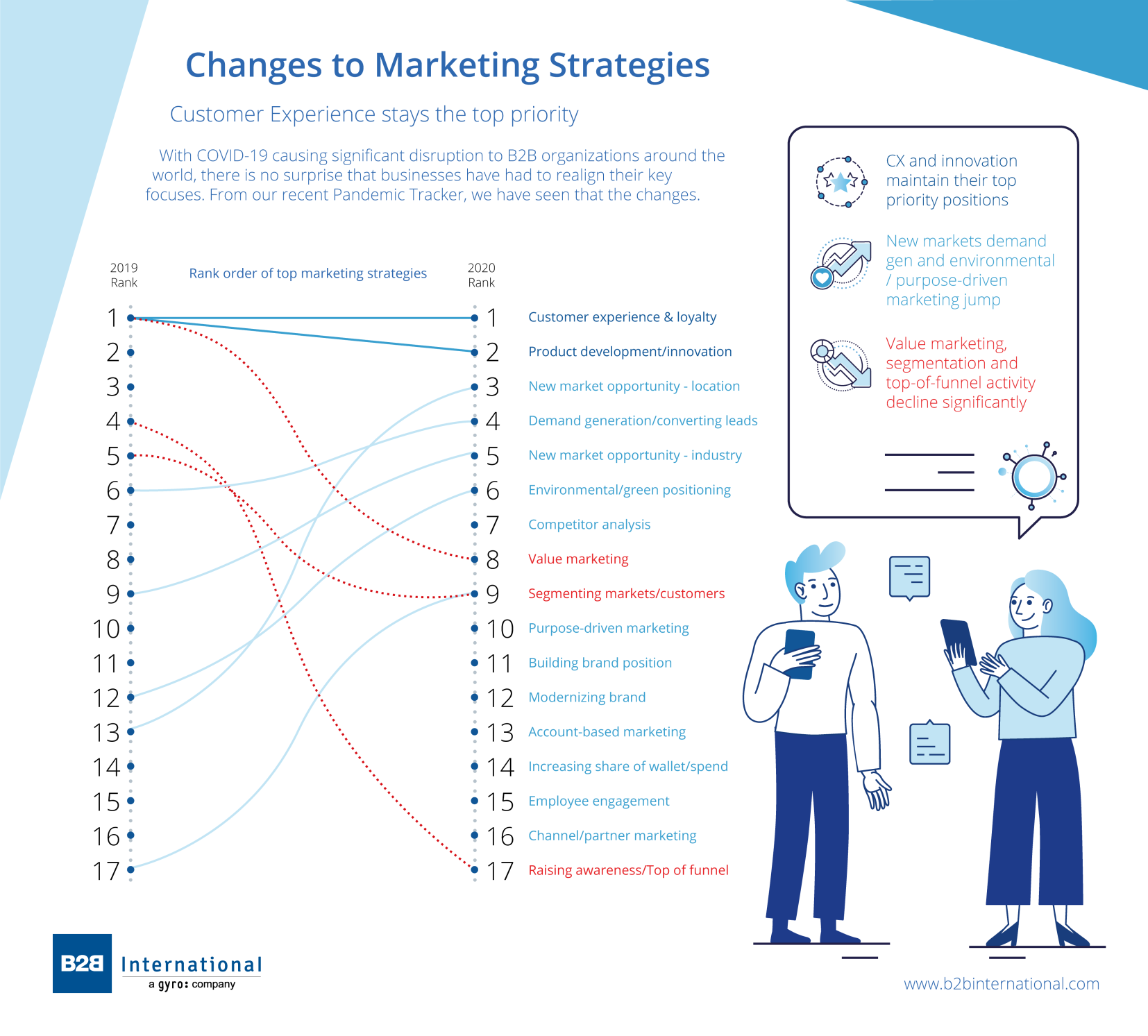
Introduction
The global pandemic has reshaped the business landscape, necessitating strategic adaptations for survival and growth. This article explores the innovative and resilient business strategies that have emerged in response to the challenges posed by the pandemic, highlighting the agility and creativity demonstrated by businesses in navigating these unprecedented times.
Agile Business Models
In the face of uncertainty, businesses have embraced agile models that prioritize flexibility and adaptability. Agile business strategies allow companies to pivot swiftly in response to changing market conditions. This approach has proven crucial in navigating disruptions and identifying new opportunities amid the evolving business environment.
Digital Transformation Acceleration
The pandemic accelerated the pace of digital transformation across industries. Businesses rapidly adopted and expanded digital technologies to facilitate remote work, enhance customer experiences, and streamline operations. This shift has not only improved efficiency but has also positioned companies to thrive in the digital age by embracing e-commerce, virtual collaboration, and data-driven decision-making.
Diversification of Revenue Streams
Recognizing the vulnerability of relying on a single revenue stream, many businesses diversified their income sources. Companies explored new product lines, entered untapped markets, or enhanced existing offerings to cater to changing consumer needs. Diversification has become a strategic imperative for building resilience against economic uncertainties.
Emphasis on E-commerce and Online Presence
With lockdowns and social distancing measures in place, businesses placed a heightened emphasis on bolstering their e-commerce capabilities and online presence. Establishing a robust online platform became not only a means of survival but also a way to reach a broader audience and adapt to shifting consumer behaviors.
Supply Chain Resilience
The pandemic exposed vulnerabilities in global supply chains, prompting businesses to reassess and fortify their supply chain resilience. Companies have focused on building more transparent, flexible, and localized supply networks to mitigate disruptions and ensure a steady flow of goods and services.
Focus on Employee Well-being and Remote Work Policies
Recognizing the importance of a healthy and engaged workforce, businesses implemented strategies to prioritize employee well-being. Remote work policies, flexible scheduling, mental health support, and initiatives to foster a positive work culture became integral to sustaining a motivated and productive team in the remote work era.
Innovation and Productivity Enhancements
The need to adapt to the “new normal” prompted businesses to innovate and enhance productivity. Companies invested in technologies that facilitate collaboration, automation, and innovation. This strategic focus on productivity improvements not only ensures operational efficiency but also positions businesses for sustained growth in dynamic markets.
Community Engagement and Social Responsibility
Businesses have increasingly recognized the importance of community engagement and social responsibility. Initiatives supporting local communities, environmental sustainability, and social causes have become integral parts of corporate strategies. These efforts not only contribute to the greater good but also resonate positively with consumers.
Financial Planning and Risk Management
The pandemic underscored the significance of robust financial planning and risk management. Businesses that weathered the storm effectively had proactive financial strategies in place, including contingency planning, cost control measures, and scenario analysis. This strategic financial resilience positioned them to navigate uncertainties and seize opportunities.
Conclusion with Link
In conclusion, the dynamic and challenging business environment brought about by the pandemic has catalyzed transformative strategies. For further insights into navigating the evolving business landscape and implementing effective strategies, visit The Healthy Consumer website. Explore resources for business resilience and stay informed about the latest strategies shaping the future of business.
Adapting to Remote Learning Challenges During the Pandemic
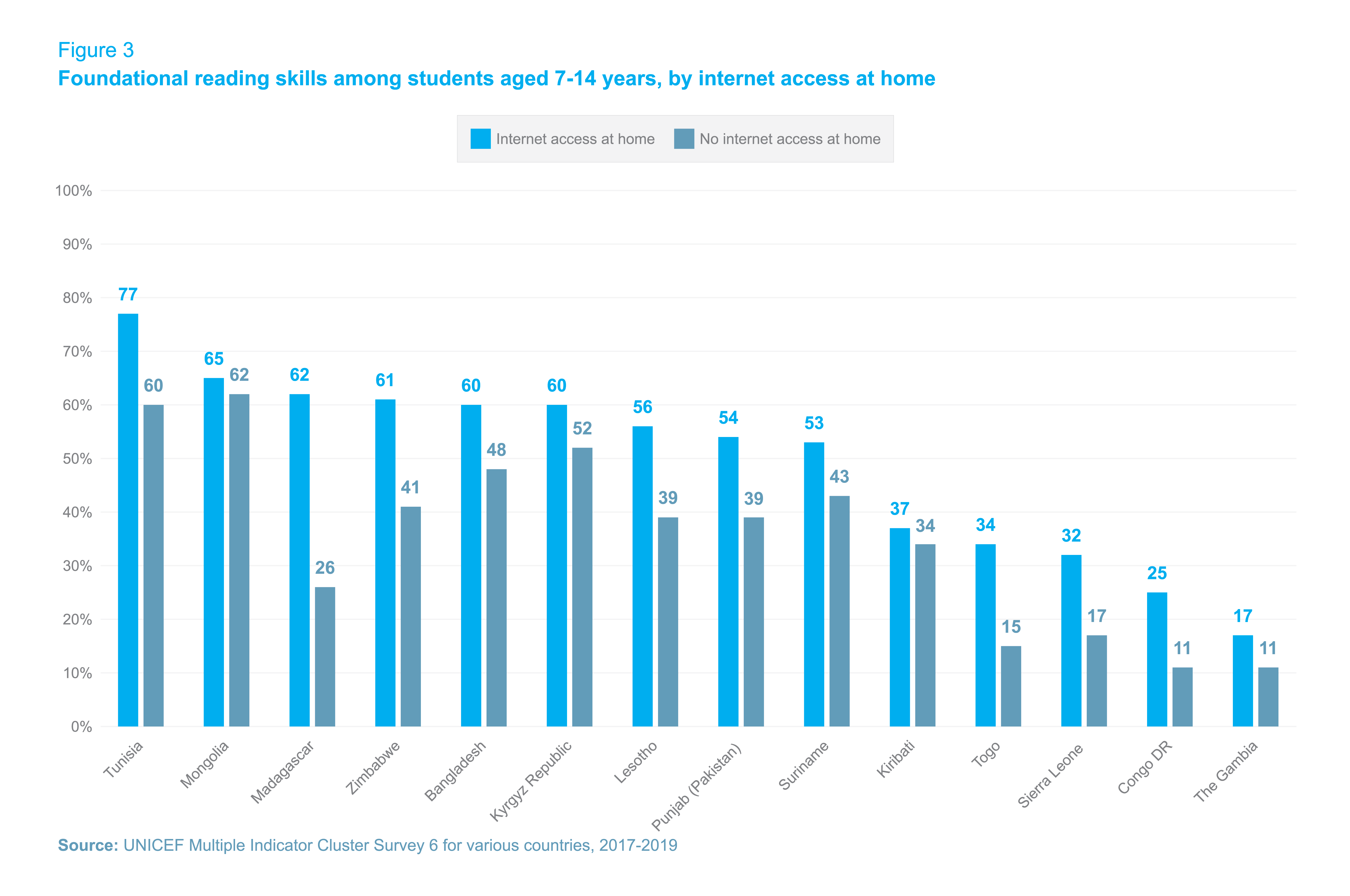
Navigating Education in Unprecedented Times
The global pandemic disrupted various facets of our lives, and education was no exception. As schools and universities closed their physical doors, educators, students, and parents found themselves navigating uncharted territory. Remote learning emerged as a lifeline, offering a semblance of continuity in education during these challenging times.
Challenges and Opportunities in Remote Learning
While remote learning became a necessity, it also brought forth a unique set of challenges. Students faced difficulties adapting to virtual classrooms, dealing with technology issues, and missing the social interactions inherent in traditional education settings. However, it also presented opportunities for innovation, pushing educators to explore new teaching methodologies and leverage digital tools to enhance the learning experience.
The Role of Technology in Shaping Remote Education
Technology played a pivotal role in the transformation of education during the pandemic. Virtual classrooms, video conferencing platforms, and collaborative online tools became the new norm. This shift not only facilitated real-time interaction between teachers and students but also opened up possibilities for global collaboration. The integration of technology became a catalyst for reshaping the future of education.
Remote Learning’s Impact on Student Engagement
One of the notable aspects of remote learning was its impact on student engagement. With the flexibility of accessing lectures and resources from anywhere, students had the opportunity to tailor their learning experience to suit their individual preferences. However, maintaining consistent engagement and motivation proved to be a challenge that educators and students worked together to address.
Addressing Equity Issues in Remote Education
While remote learning offered flexibility, it also highlighted existing disparities in access to technology and the internet. Not all students had equal opportunities to participate fully in virtual classrooms. Schools and policymakers recognized the importance of addressing these equity issues to ensure that education remains accessible to all, regardless of socio-economic factors.
Remote Learning as a Catalyst for Lifelong Learning
The pandemic emphasized the need for continuous adaptation and learning in a rapidly changing world. Remote learning not only served as a short-term solution but also became a catalyst for promoting lifelong learning. The skills developed during this period, such as digital literacy and self-directed learning, are valuable in preparing individuals for the evolving demands of the future.
Teacher Innovation and Professional Development
Educators found themselves at the forefront of innovation during the pandemic. Adapting lesson plans for online delivery, exploring new teaching methodologies, and incorporating interactive elements into virtual classrooms became essential skills. Professional development opportunities and collaborative platforms allowed teachers to share insights and support one another in this transformative journey.
The Emotional and Social Impact on Students
Beyond academic challenges, the shift to remote learning also had emotional and social implications for students. The absence of in-person interactions with peers and teachers took a toll on the social development of students. Schools and educators recognized the importance of fostering emotional well-being and implemented strategies to address the social aspect of learning in virtual environments.
Preparing for the Future of Education
As the world gradually recovers from the pandemic, the lessons learned from the era of remote learning will shape the future of education. Schools and educational institutions are now better prepared to integrate technology seamlessly into their curricula. The experience gained during this challenging period will contribute to a more resilient and adaptable education system.
To explore more about the impact of remote learning during the pandemic on consumer health, visit Remote Learning Pandemic. As we reflect on this transformative period in education, it is evident that the challenges posed by the pandemic have accelerated positive changes, fostering a more innovative, inclusive, and technologically advanced approach to learning.
Revitalizing Economy: Strategies for Post-Pandemic Recovery

Introduction
As the world emerges from the throes of a global pandemic, the focus inevitably shifts towards economic recovery. Navigating the complexities of post-pandemic economic revival requires strategic planning, collaboration, and a commitment to fostering resilience.
Assessing the Economic Landscape
The first step in any successful recovery plan is a comprehensive assessment of the economic landscape. Understanding the specific challenges faced by industries, businesses, and individuals lays the foundation for targeted and effective recovery strategies.
Government Stimulus and Support
Governments play a pivotal role in kickstarting economic recovery. Implementing stimulus packages, financial aid, and support programs for businesses and individuals can provide the necessary boost to revive economic activity. Well-calibrated policies can create an environment conducive to growth.
Investing in Infrastructure Development
Infrastructure projects have historically been powerful engines of economic recovery. Governments and private sectors can collaborate on strategic infrastructure investments, creating jobs and stimulating economic growth. These projects not only address immediate employment needs but also contribute to long-term development.
Supporting Small and Medium Enterprises (SMEs)
Small and medium enterprises form the backbone of many economies. Prioritizing support for SMEs through access to financing, streamlined regulatory processes, and targeted assistance programs can catalyze economic recovery. Fostering entrepreneurship is key to rebuilding vibrant economies.
Embracing Digital Transformation
The pandemic has accelerated the need for digital transformation across industries. Embracing technological advancements and innovation is crucial for economic recovery. Businesses that invest in digital capabilities not only adapt to the new normal but also position themselves for sustained growth.
Reskilling and Workforce Development
The changing economic landscape requires a skilled and adaptable workforce. Investing in reskilling and workforce development programs ensures that individuals are equipped with the necessary skills for emerging job opportunities. This proactive approach is vital for reducing unemployment and driving economic recovery.
Promoting Sustainable Practices
A sustainable approach to economic recovery is essential for long-term resilience. Promoting environmentally friendly practices, supporting green industries, and integrating sustainability into economic policies contribute to a robust and future-proof recovery.
International Collaboration for Trade
Global economic recovery is interconnected. Collaborating on international trade agreements, removing trade barriers, and fostering economic partnerships can significantly boost recovery efforts. Open and fair trade practices contribute to the economic well-being of nations on a global scale.
Addressing Social Inequities
Economic recovery should not exacerbate social inequalities. Policies that address disparities in access to resources, education, and healthcare are integral to a just recovery. Building an inclusive economy ensures that the benefits of recovery reach all segments of society.
Building Economic Resilience for the Future
As nations embark on the path of recovery, it’s crucial to build economic resilience for the future. Diversifying industries, implementing risk management strategies, and staying adaptable to evolving global dynamics are essential for long-term economic stability.
Conclusion with Link
In conclusion, the road to pandemic economic recovery is multifaceted, requiring a combination of strategic planning, government intervention, and collaborative efforts. For further insights into navigating the challenges of economic recovery, visit The Healthy Consumer website. Stay informed, stay resilient.
Adapting Workspaces: Navigating Challenges Amidst Pandemic

Adapting Workspaces: Navigating Challenges Amidst Pandemic
The global pandemic has reshaped the landscape of work, necessitating significant adaptations in the way we approach and organize our workspaces. In this article, we explore the key strategies and considerations for adapting workplaces to the challenges posed by the ongoing pandemic.
Understanding the Need for Adaptation: Evolving Work Dynamics
The need for workplace adaptation stems from the evolving dynamics of work in the face of the pandemic. Remote work, hybrid models, and changing employee expectations have become integral aspects of the new normal. Understanding these shifts is crucial for organizations seeking to adapt their workspaces effectively.
Remote Work and Virtual Collaboration: Embracing Flexibility
The pandemic has accelerated the adoption of remote work and virtual collaboration tools. Adapting workplaces involves embracing flexibility and providing the necessary infrastructure for remote work. This includes robust technology solutions, secure communication platforms, and policies that support a balance between remote and in-person work.
Flexible Work Arrangements: Tailoring Solutions to Individual Needs
Workplace adaptation requires flexible work arrangements that cater to individual needs. This may involve staggered work hours, compressed workweeks, or hybrid schedules that combine both remote and on-site work. Tailoring solutions to accommodate the diverse needs of employees contributes to a more adaptable and resilient workplace.
Safety Measures and Hygiene Protocols: Prioritizing Employee Well-being
The ongoing pandemic emphasizes the importance of prioritizing employee well-being through safety measures and hygiene protocols. Adapting workplaces involves implementing measures such as social distancing, frequent sanitization, and proper ventilation. Prioritizing the health and safety of employees creates a conducive and secure work environment.
Digital Transformation: Accelerating Technology Adoption
Digital transformation has become a cornerstone of workplace adaptation. Accelerating technology adoption is essential for streamlining processes, enhancing communication, and ensuring connectivity in a dispersed work environment. Embracing tools for project management, collaboration, and virtual meetings contributes to the efficiency of the adapted workspace.
Flexible Office Design: Redefining Physical Spaces
Redefining physical spaces through flexible office design is a key aspect of workplace adaptation. This may involve creating modular workstations, incorporating flexible seating arrangements, and optimizing layouts to accommodate changing needs. Designing spaces that support collaboration and individual focus enhances the adaptability of the workplace.
Employee Engagement Initiatives: Fostering Connection in Virtual Settings
Adapting workplaces requires a focus on employee engagement initiatives. Fostering connection in virtual settings involves regular virtual meetings, team-building activities, and initiatives that promote a sense of belonging. Investing in virtual social interactions contributes to maintaining a positive workplace culture despite physical distance.
Well-being Programs: Supporting Mental and Physical Health
Employee well-being goes beyond physical safety; it includes mental and physical health. Workplace adaptation involves implementing well-being programs that support the holistic health of employees. This may include virtual fitness classes, mental health resources, and initiatives that promote a healthy work-life balance.
Continuous Communication: Navigating Change Transparently
Effective workplace adaptation relies on continuous communication. Transparently navigating change involves keeping employees informed about the evolving workplace policies, expectations, and the organization’s overall strategy. Clear and regular communication minimizes uncertainty and fosters a sense of stability during times of adaptation.
Accessing Workplace Adaptation Pandemic: A Resource Hub
For additional insights and resources on workplace adaptation during the pandemic, consider exploring Workplace Adaptation Pandemic. This centralized hub provides valuable information, practical tips, and support for organizations navigating the challenges of adapting their workplaces to the ongoing pandemic dynamics.
Navigating the Global Economic Pandemic: Strategies for Resilience

Navigating the Global Economic Pandemic: Strategies for Resilience
The world has been thrust into unprecedented challenges with the onset of the Global Economic Pandemic. As nations grapple with economic uncertainties, adopting robust strategies for resilience becomes imperative.
Understanding the Economic Impact
The Global Economic Pandemic has triggered disruptions across industries, leading to widespread job losses, financial instability, and a reevaluation of economic structures. Understanding the multifaceted impact is crucial for formulating effective responses.
Government Stimulus and Support
Governments worldwide have responded with stimulus packages and support measures to mitigate the economic fallout. These initiatives aim to provide financial assistance to businesses, individuals, and sectors heavily affected by the pandemic, injecting liquidity into strained economies.
Adapting Business Models
In the face of economic challenges, businesses are compelled to rethink and adapt their models. The shift to digital platforms, embracing e-commerce, and exploring innovative solutions have become essential strategies for surviving and thriving in the new economic landscape.
Investing in Digital Transformation
The Global Economic Pandemic has accelerated the need for digital transformation. Businesses that invest in technology to streamline processes, enhance online presence, and facilitate remote work are better positioned to navigate the challenges posed by the economic downturn.
Workforce Resilience and Upskilling
Maintaining a resilient workforce is paramount. Upskilling employees to meet the demands of evolving industries and fostering adaptability can enhance individual and collective resilience in the face of economic uncertainties.
Sustainable Practices for Long-Term Growth
Amidst economic challenges, there is a growing recognition of the importance of sustainable practices. Businesses that prioritize environmental, social, and governance (ESG) factors are not only contributing to a better world but are also building a foundation for long-term economic growth.
Global Economic Collaboration
The interconnected nature of the global economy calls for increased collaboration among nations. Coordinated efforts to address trade imbalances, promote economic cooperation, and share resources are essential for a collective recovery from the Global Economic Pandemic.
Financial Planning and Risk Management
Individuals and businesses alike are placing a renewed emphasis on financial planning and risk management. Diversifying investments, creating emergency funds, and implementing robust risk mitigation strategies are critical in navigating economic uncertainties.
Reshaping Economic Policies
The Global Economic Pandemic necessitates a reevaluation of economic policies. Governments are challenged to develop policies that promote inclusive growth, address income inequality, and build economic resilience in the face of future crises.
Community and Global Solidarity
In times of economic hardship, fostering community and global solidarity is crucial. Collaborative initiatives, support networks, and a shared commitment to overcoming economic challenges contribute to building a more resilient and interconnected world.
The Path Forward – Global Economic Pandemic
In the journey to navigate the complexities of the Global Economic Pandemic, The Healthy Consumer serves as a valuable resource. Explore comprehensive information, stay informed, and actively participate in collective efforts to foster economic resilience. Together, we can build a stronger, more sustainable global economy.
Reviving Economies: Strategies for Pandemic Recovery
Strategies for Economic Recovery During the Pandemic
The global pandemic has left lasting impacts on economies worldwide, prompting the need for strategic measures to facilitate recovery. In this article, we explore key strategies and considerations for economic revival in the midst of the ongoing pandemic.
Understanding the Economic Impact of the Pandemic
Before delving into recovery strategies, it’s essential to comprehend the profound economic impact of the pandemic. This section explores the challenges faced by businesses, workers, and industries, emphasizing the need for targeted interventions to address the diverse repercussions.
Government Stimulus and Fiscal Policies
Governments play a crucial role in economic recovery. This part of the article discusses the importance of stimulus packages and fiscal policies. Governments worldwide have implemented measures such as financial aid, tax relief, and infrastructure spending to stimulate economic activity and support affected sectors.
Supporting Small and Medium-sized Enterprises (SMEs)
SMEs are the backbone of many economies, and their recovery is pivotal. This section explores strategies to support SMEs, including access to financing, business advisory services, and incentives. Strengthening the SME sector contributes significantly to overall economic revival.
Investing in Digital Transformation
The pandemic has accelerated the need for digital transformation. This part of the article discusses the importance of investing in technology to enhance business resilience and agility. Embracing digital tools, e-commerce, and automation can position businesses for sustained growth in the evolving economic landscape.
Workforce Retraining and Reskilling
Unemployment and changes in job demand are critical issues in pandemic recovery. This section explores the importance of workforce retraining and reskilling programs. Governments and businesses can collaborate to provide training opportunities that align with emerging skills needed in the transformed job market.
Green Initiatives for Sustainable Recovery
As economies recover, there is a growing emphasis on sustainability. This part of the article discusses green initiatives and sustainable practices as integral components of economic recovery. Investing in renewable energy, eco-friendly technologies, and environmentally conscious policies contributes to long-term economic and environmental health.
International Collaboration for Trade and Commerce
Global trade and commerce have been disrupted, necessitating international collaboration. This section explores strategies for fostering collaboration in trade, removing barriers, and promoting fair practices. A cooperative approach enhances economic recovery on a global scale.
Consumer Confidence and Spending Patterns
Consumer confidence is pivotal for economic recovery. This part of the article discusses the role of rebuilding consumer confidence and understanding shifting spending patterns. Businesses need to adapt to evolving consumer behaviors and preferences to drive sustained economic growth.
TheHealthyConsumer.com: A Resource for Economic Recovery Insights
For comprehensive insights into economic recovery during the pandemic, visit TheHealthyConsumer.com. The website offers articles, tips, and resources dedicated to understanding and navigating the complexities of economic recovery in these challenging times.
Looking Ahead: Toward a Resilient Economic Future
In conclusion, economic recovery during the pandemic demands a multifaceted approach. This concluding section reflects on the importance of ongoing adaptation, innovation, and collaboration to build a resilient economic future that can withstand unforeseen challenges.
In summary, reviving economies during the pandemic requires a coordinated effort involving governments, businesses, and individuals. TheHealthyConsumer.com serves as a valuable resource for those seeking guidance on understanding and contributing to the ongoing efforts of economic recovery in these unprecedented times.
Remote Work Revolution: Navigating the Pandemic Transition
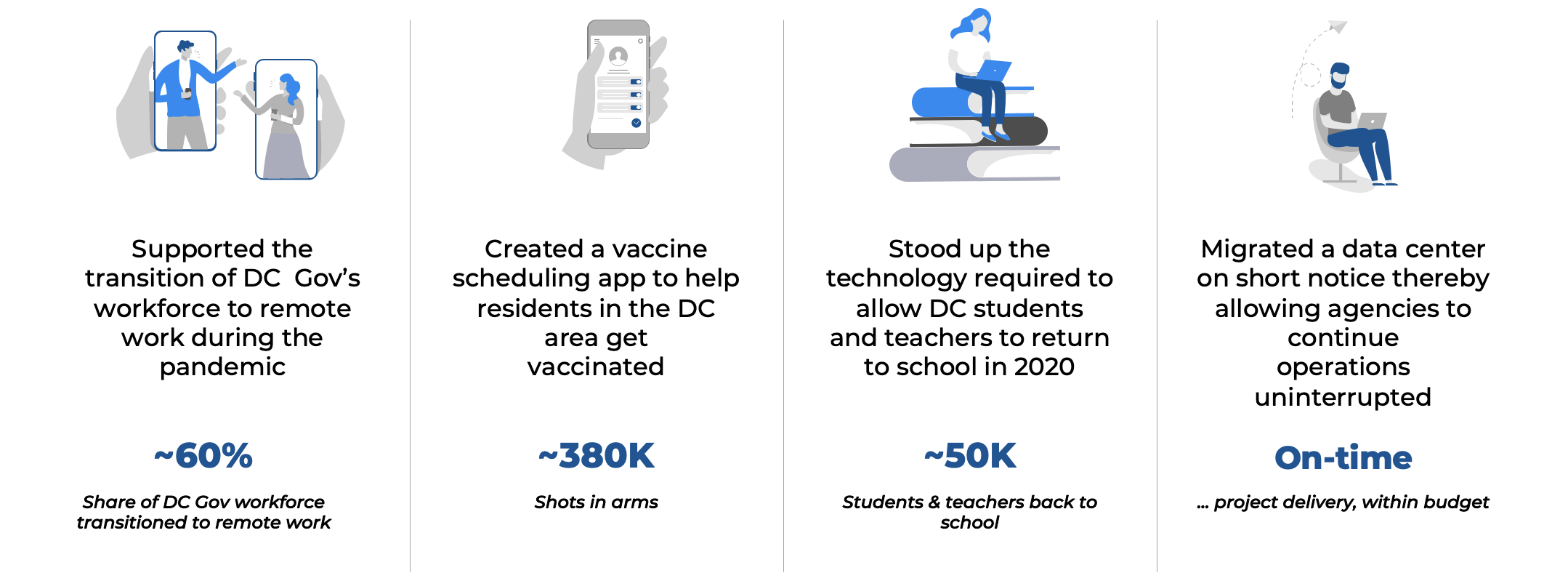
Remote Work Revolution: Navigating the Pandemic Transition
The global pandemic has triggered a seismic shift in how we approach work, leading to a widespread adoption of remote work. This article explores the nuances of the remote work transition during the pandemic, shedding light on its impact, challenges, and the evolving landscape of the modern workplace.
Remote Work Transition Pandemic: A Comprehensive Guide
For a comprehensive guide on the remote work transition during the pandemic, visit Remote Work Transition Pandemic for valuable insights and resources.
Accelerated Adoption and Digital Transformation:
The onset of the pandemic accelerated the adoption of remote work, prompting organizations worldwide to undergo rapid digital transformations. This section explores how businesses swiftly implemented technologies and tools to facilitate remote collaboration, communication, and workflow management.
Challenges and Adaptation for Employees:
Amid the benefits of remote work, employees faced a myriad of challenges during the transition. From navigating the boundaries between work and personal life to dealing with potential isolation, this section delves into the challenges individuals encountered and how they adapted to the evolving nature of remote work.
Impact on Organizational Culture:
The shift to remote work has a profound impact on organizational culture. Remote teams face unique challenges in fostering collaboration, communication, and maintaining a shared sense of identity. This section discusses how organizations have adapted their culture to accommodate remote work and maintain a cohesive team spirit.
Technological Infrastructure and Cybersecurity:
A successful remote work transition heavily relies on robust technological infrastructure and cybersecurity measures. This paragraph explores the critical role of IT infrastructure, data security, and the challenges organizations faced in ensuring a secure remote working environment for their employees.
Flexible Work Arrangements and Employee Well-being:
Remote work introduced a paradigm shift in traditional work arrangements, emphasizing the importance of flexibility. This section examines how organizations embraced flexible work schedules, remote-friendly policies, and the impact of these changes on employee well-being and work-life balance.
Training and Skill Development:
As remote work became the new normal, employees required new skill sets and competencies. Organizations invested in training programs to equip their workforce with the necessary skills for effective remote collaboration, communication, and digital literacy.
Hybrid Work Models and Future Predictions:
The evolving landscape of remote work includes the emergence of hybrid work models. This section discusses how organizations are considering a blend of remote and in-office work, offering flexibility while maintaining elements of in-person collaboration. Predictions about the future of remote work are also explored.
Employee Engagement and Team Building:
Maintaining employee engagement and fostering team building in a remote environment pose unique challenges. This paragraph delves into the strategies organizations adopted to keep teams connected, motivated, and engaged, despite physical distance.
The Role of Leadership in Remote Work Success:
Leadership plays a crucial role in the success of remote work initiatives. This section examines how effective leadership strategies, clear communication, and a focus on employee well-being contribute to a thriving remote work environment.
Conclusion:
The remote work revolution sparked by the pandemic has reshaped the way we approach work, influencing organizational structures, culture, and the employee experience. As we navigate this transformative period, understanding the challenges, embracing technological advancements, and prioritizing employee well-being are crucial elements for the continued success of remote work. The journey toward a more flexible and adaptive work landscape continues, with organizations and individuals alike finding innovative ways to thrive in the remote work revolution.


